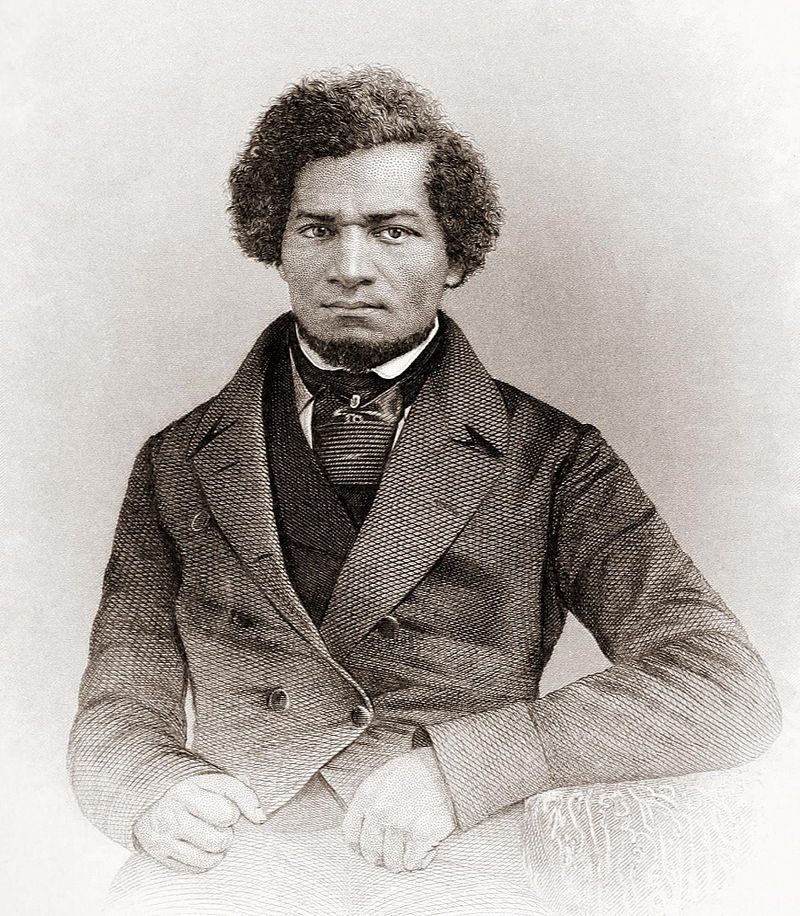Host: Brooks Winfree, Department of History, UT-Austin
Guest: Manisha Sinha, Draper Chair in American History, University of Connecticut
It’s well known in American history that slavery was abolished with the 13th amendment to the constitution, however, the debate over slavery and the movement to abolish it is as old as the American republic itself. Who were abolitionists? How did they organize? What were their methods? And, considering that it took a Civil War to put an end to slavery, did they have any real effect?
Yes, they did! Dr. Manisha Sinha from the University of Connecticut joins us to discuss her research on the deeper legacy of abolitionists–men and women, blacks and whites, Northern and Southern–and how the debate over slavery shaped American history from the Revolution to the Civil War.
Guests
 Manisha SinhaJames L. and Shirley A. Draper Chair in American History at the University of Connecticut
Manisha SinhaJames L. and Shirley A. Draper Chair in American History at the University of Connecticut
Hosts
 Brooks WinfreeDoctoral Candidate, Department of History, The University of Texas at Austin
Brooks WinfreeDoctoral Candidate, Department of History, The University of Texas at Austin

You wrote a book two years ago about abolition and abolitionism that received a lot of attention. Before we delve into that too much, I want to touch on your first book, The Counterrevolution of Slavery: Politics and Ideology in Antebellum South Carolina, which was in 2000. In that book, you examined secessionists in South Carolina, a state which is generally associated with secessionism, for very good reason. You examined a group of people who began advocating for that state, and for the South, to remove itself from the Union–beginning, actually, several decades before the war.
I was curious: after studying these people, mostly men, white men, politically well-connected slaveholders, how did you then decide to write a volume about abolitionists?
That’s a great question. The facetious, fast answer is that I actually wanted to write a book about people that I liked! Because I had studied in such great detail secessionist ideology, both states’ rights constitution theory, and also the pro-slavery argument, I wanted to look at the opposite end of that ideological divide. To me, the abolitionists really did represent that. And, writing this book, I had a good sense of what the abolitionists were up against, because I had studied how South Carolinian planter politicians were at the vanguard of the secession movement, from nullification to secession. One could really see the enormous national political power of southern slaveholders and of the centrality of the political economy of slavery in the early American Republic.
So, when you see how entrenched the institution of slavery was, not just in southern life but in the national American political structure, and also the national economy, you really got a sense of what the abolitionists were up against. I think it allowed me to appreciate the abolition movement and the arguments better because I had studied their opponents so deeply and so well earlier.
If secessionists became active decades before the Civil War, when did we first see abolitionists start being active in the United States?
Another good question. My sense of abolition, as is that of most people, is that this was primarily an antebellum movement, the period maybe three decades before the Civil War? This was a prime moment of the abolition movement. But, as I studied the abolitionists–black and white–I realized that there’s a long history to the abolition movement that historians tended to neglect. That was the first wave of the abolition movement during the American Revolutionary era, which resulted in emancipation in the North. So, I sort of moved back and looked at that wave of abolition in the Revolutionary era and went ahead to look at the interracial, more radical movement of the pre-Civil War years. I realized that this history had a lot more continuities than disjunctures, and that in order to appreciate the movement as a whole I would need to tell the story in the longue durée. So, yes, I went back to the Revolutionary era.
I also realized, having studied the South Carolinians–even though my book looks just at the period from nullification to succession, which is around the 1820s to 1860–when I wrote that, I had actually studied a lot of the earlier positions the South Carolinians had taken. I found that many of them were taking these pro-slavery, very outwardly anti-Democratic positions right from the Revolutionary era. So, I could not include that–that book is not so big, it’s a shorter monograph–but I realized that the debate over slavery had begun in the founding moment and that it continues and accelerates in the period before the Civil War.
I know a lot of scholars like to focus on the Revolutionary period, the so-called post-nati laws, which is when slavery was abolished in the north where it obviously never as entrenched as it was in the south. But, you find quite a bit of continuity over time. Even though the country has changed so much, labor is changing across the country; you see great continuities with the revolutionary period and with the antebellum period.
Well, not in terms of the broader period as a whole, but in terms of abolitionists and the movement to abolition slavery, the tactics that they adopt, the ideas. The conventional assessment was that the first wave was sort of gradualist, conservative; that it was a predominately white-led movement; and that really in the antebellum period it becomes a more radical, inter-racial movement. What I found was that, if you look at just the abolition movement, some of the earlier abolitionists would be considered radical. They practiced inter-racialism, they demanded immediate abolition, even though the laws were post-nati–they freed children of slaves, not the slaves themselves–so they are unfolded over a long period of time in the northern states. Even though slavery was not such an entrenched institution in the north, there was a lot of opposition to emancipation, and that’s why it takes such a long time to make those laws and get them implemented. Abolitionists’ activism really flowers at that time in making sure that these northern laws of emancipation were implemented.
So even, for instance, in a new state like Vermont, which abolished slavery in its constitution, in order to implement that constitutional abolition, you had to have African Americans and their anti-slavery allies–lawyers–bring up cases that would implement those laws. So, I make a differentiation between these state mandated laws that were generally compromises between slave holders interested in their property and the slaves’ desire for freedom, and the abolitionists who were the activists pushing the button on this issue on the ground.
While we’re on the subject of the abolitionists pushing the button, in your book you wrote that the movement was driven by passionate outsiders and abolitionists were hybrids of old-fashioned moralizers and modern exponents of human rights. So, who were American abolitionists?
That is a very interesting question, too, because abolitionists have always been more traditionally viewed as these fanatics and extremists, religious fanatics, or were reacting to “status anxiety.” There are all sorts of reasons that historians have put forward about abolitionists’ motivations. What I found is that they were just ordinary American citizens, and many non-citizens, actually. Ordinary people: black and white, men and women. That is why I avoid what I call a “social movement” perspective in understanding abolitionists, and not looking at the movement as one of just these outstanding individual leaders, or distant groups that exist by themselves: black abolitionists, women abolitionists, etc. But really to see them as part of a broader movement, with its own ideology, with its own print culture, with its own organizations.
And, in fact, in opposition to some historians who argue that abolitionism was mostly a white movement–that most members were middle and upperclass whites–you’ve placed African Americans and slave resistance at the center of American abolition, correct?
Absolutely, I do. I think that somehow the notion that abolitionists were these northern, middle class bourgeois reformers who were basically armchair philosophers who had no idea about the reality of slavery is a caricature that is derived from defensive responses by Southern politicians and slaveholders to the rise of the abolition movement. Many of them had simply erased the black presence in the movement. I also did not want to do a book that only looked at African Americans in isolation, as many had done before me. Because I think if you do that you cannot understand their impact on the broader movement. It was very important to me to reimagine the movement as an interracial movement, and to look at the oppositional space that it created for these interactions to take place. There were relationships of cooperation, sometimes of conflict, too. In order to do that, I thought it was important for me to write the broader history of abolition and look at the emergence, especially, of fugitive slaves in the movement.

So, the latter half of the book is really devoted to what I call fugitive slave abolitionists, of whom Frederick Douglass was only the most outstanding–there were a whole slew of them. How they acquire leadership positions and really become the face of the movement on the eve of the Civil War; and how slave resistance moves and radicalizes the movement toward more revolutionary directions–especially in the 1850s over the contestation of the draconian Fugitive Slave Law of 1850, so you end up with someone like John Brown, who’s always seen as this crazy aberrant insane abolitionist–and you can really place him within these broader trends within the movement of the 1850s.
So it was important for me to stress the inter-racialism of the movement.
I guess you could say, perhaps, some historians have placed anti-slavery activism from whites in one camp, and slave resistance in another, and you join those together. What are some specific acts of slave resistance that you could share with us that really drove the movement, that informed how people thought about the abolition of slavery in the United States?
For the early period, I talk a lot about the impact of the Haitian Revolution on the abolitionists imagination. This is true not just for the French and the British, but also for American abolitionists. I have, I think, ample documentation in the book on that. For the later period, despite the iconic slave rebellions that take place at the same time as the rise of radical immediatism–the most famous, of course, is Nat Turner’s rebellion. It’s not as if Nat Turner’s rebellion leads to the rise of abolition, it just coincidentally happens in the same year that William Lloyd Garrison starts publishing The Liberator. And what was interesting to me is that Garrison was one of two editors to defend Nat Turner. Now, Garrison is a pacifist; he believes in non-violent tactics, and, to me, just the statements that he makes on slave resistance and slave rebellions become a very important window into the abolitionist mindset on this issue.

Now, besides certain slave rebellions that push Anglo-Americans on the issue, I also look at the famous Christmas rebellion that acts as a catalyst for British abolition. I look, really, at what I call these fugitive slave abolitionists who fed into the movement. If you look at many of these iconic cases around fugitive slaves, or slaveholders sojourning with their slaves in the north, you can actually tease out this relationship between grassroots black activism and anti-slavery law and politics. There are really important court cases that are fought in the north, establishing the “Freedom Principle” in the north, making sure that slaves either freeing slavery are not remanded back to slavery, freed blacks are not kidnapped into slavery, or slaveholders sojourning with their slaves cannot bring their slaves to Northern states that had made slavery illegal.
I looked at many of these court cases and what I found was that alliances were being built, not just amongst black and white abolitionists, and abolitionist lawyers, but also with anti-slavery politicians. So, when abolitionists asked, for instance, John Quincy Adams to represent the Amistad rebels before the Supreme Court, that’s nothing new and unusual. There’s a long history of doing that in the 1830s and 1840s, recruiting anti-slavery politicians. So, the notion that these abolitionists are these crazy agitators with no understanding of politics, and that they were not into reading in that sphere is rather simplistic and goes against the historical record. Many of these cases–the Latimer case in Massachusetts–all of this leads to Craig vs. Pennsylvania. That doesn’t come out of the blue, and the fact that the new Fugitive Slave Law is passed is also part of that.
So, the argument that I’m making in the book is that the controversy over the extension of slavery has to take into account the conflict between northern laws of freedom and southern laws of slavery, and how abolitionists use the opportunity of all these dramatic cases to get personal liberty laws enacted in the north and make sure that enslaved people have the due process of law: trial by jury, etc, available to them when they come to the north.
In addition to being very active in the movement to abolish slavery, which was perhaps as radical as some people have thought it was, abolitionists were involved in many other reform movements as well. Do you think that the history of abolition can tell us something about other reform movements, either contemporaneously or perhaps after emancipation as well?
Absolutely! I think abolition becomes the breeding ground, certainly, for the women’s rights movement. I trace that out, how the antebellum women’s rights movement in the north really emerges from abolition. Southern slaveholders are quite aware of this, because when they critique abolitionists, they critique them for espousing what they think are all these dangerous new ‘isms.’ Not just abolition of slavery but also feminism, socialism–as in utopian socialism, many abolitionists are involved with communitarian projects in the north. They’re involved sometimes with the early labor movement, they call themselves abolitionist socialists. They look to the plight of free white wage workers in the north, also. Many of them are involved with the international peace movement.
So, it was interesting for me to look at all these transnational networks of protest that abolitionists were cultivating and the ways in which contemporary radical movements overlapped with abolition. This is not just true for white abolitionists, as is usually told, but true of black abolitionists, like James W C Pennington and William Wells Brown, who attended international peace congresses, become known in the movement, and became known to European radicals and revolutionaries. Certainly, abolitionists form a lot of connections with European revolutionaries during the 1848 revolutions: there are connections with Russian reformers fighting against serfdom, there are connections with Indian nationalists questioning British rule. To me these international connections were really important because historians have pretty much ignored them, and it was important to tell that story. I do that in an entire chapter devoted to it, called “The Abolitionist International.”